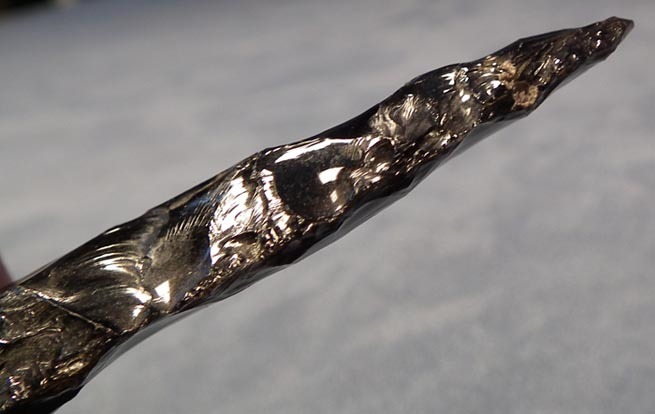

The latter possibility means that our species is at least 85,000 older than we believe. These spears were made from obsidian by either another species - which had to be extremely crafty and clever - or ancient humans.

The remains are so ancient that they actually predate the earliest known fossils of our species by 85,000 years. Remarkably, obsidian tools may even predate humans! Researchers have found what they believe to be the oldest known stone-tipped throwing spears. Ancients may have transported these goods thousands of miles to trade for other goods and services. Historians believe obsidian may have been the very first material actively mined and used to manufacture sharp tools at scale. The colors are thought to be caused mainly by trace elements of inclusions. Rarely, obsidian can be blue, red, orange, or yellow. However, it can also be brown, tan, or green. It is an amorphous material known as a “mineraloid.” The result is a volcanic glass with a smooth uniform texture that breaks with a conchoidal fractureīlack is the most common color of obsidian. Obsidian is an igneous rock that forms when molten rock material cools so rapidly that atoms are unable to arrange themselves into a crystalline structure. All sorts of prehistoric artifacts made from obsidian have been found by archeologists, including knives, arrowheads, spear points, and scrapers. Over time, ancient peoples learned to break obsidian into tools of various shapes. This means the obsidian breaks into pieces with curved surfaces that are razor thin and extremely sharp. The volcanic glass is thought to be so sharp because of the way it breaks, a pattern geologists call a conchoidal fracture.

“It is in this manner: First they get out a knife stone (obsidian core) which is black like jet and 20 cm or slightly less in length, and they make it cylindrical and as thick as the calf of the leg, and they place the stone between the feet, and with a stick apply force to the edges of the stone, and at every push they give a little knife springs off with its edges like those of a razor.” Hester et al. Motolinia, a 16th-century Spanish observer, left this account of prismatic blade production: “The prismatic glass blade is infinitely sharper than a honed steel edge, and these blades can be produced in a wide variety of shapes and sizes,” wrote Bruce A. Don Crabtree who re-discovered the production technique in the 1970s. The finest of these prismatic blades were produced in Mesoamerica about 2,500 years ago, according to Dr.


 0 kommentar(er)
0 kommentar(er)
